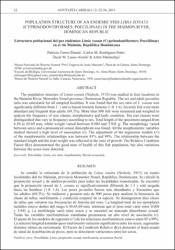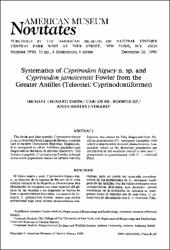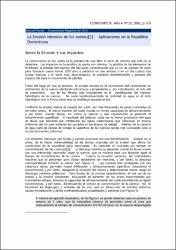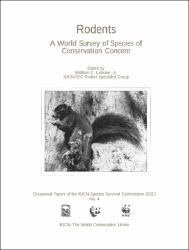Investigación ambiental: Recent submissions
Now showing items 1111-1115 of 1696
-
Ecological reflections on the wading birds of the Dominican Republic : report of a survey conducted in the summer of 1987
(1990)[English] During a short visit to a number of wetlands in the Dominican Republic on the island of Hispaniola, we sighted thirteen species of wading birds. -
Population structure of an endemic fish Limia zonata (Cyprinodontiformes: Poeciliinae) in the Maimón River, Dominican Republic
(2019)[English] The population structure of Limia zonata (Nichols, 1915) was studied in four locations in the Maimón River, Monseñor Nouel province, Dominican Republic. The sex and adult-juveniles ratio was calculated for all ... -
Systematics of Cyprinodon higuey n. sp. and Cyprinodon jamaicensis Fowler from the Greater Antilles (Teleostei, Cyprinodontiformes)
(1990)[English] The black-and-blue pupfish, Cyprinodon higuey n. sp., is described from Laguna de Bavaro, a coastal lake in eastern Dominican Republic, Hispaniola. It is compared to other Antillean pupfishes and diagnosed on the ... -
La erosión intensiva de los suelos : aplicaciones en la República Dominicana
(2001)Presenta una reflexión sobre los efectos de la erosión a nivel productivo y de conservación ambiental. Describe los aspectos institucionales del manejo de los recursos naturales en República Dominicana. Brinda recomendaciones ... -
Endemic rodents of the West Indies : the end of a splendid isolation
(1989)The objective of this paper is to summarize the status of endangered, vulnerable, or rare rodents in the Middle American Region. This region includes Mexico, all of Central America south to the Colombian border, and the ...





